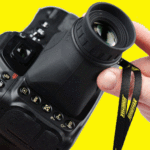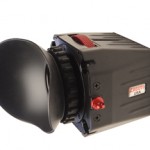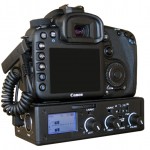The Canon 5D MKII and 7D are the first of Canon’s ‘pro’ level hybrid cameras, namely, ones that can shoot both stills and high-definition video. This has opened wonderful possibilities for the photographer, but also poses some significant obstacles and challenges.
Video has been fast developing in both quality and scope of usage in the last decade. Consumer all-in-one hybrid cameras have been available for years. Video cameras have gotten smaller and more compact and at the same time, quality of output has soared. But until recently, both pro or amateur alike had to carry two separate pieces of equipment in order to shoot professional-quality stills and video.
While there are some minor differences in the layout of the video controls between the 5D MKII and the 7D, the two essentially shoot in the same manner and with similar results. Despite the differences in their sensor size and resolution, the image quality is very similar in my experience — ie., excellent. Much has been written about the [motion picture] filmic quality of the image, and in fact the image is superb.
Because of the large sensors (24 x 36mm in the 5D MKII and 22.3 x 14.9 mm (APS-C size) in the 7D), depth of field is very shallow compared to even the best-quality professional dedicated video cameras, which sport 1/4 to 1/3-inch sensors. With the smaller sensor sizes, more of a scene is in focus at a given aperture than with a larger sensor. Unlike 35mm Hollywood-style film cameras, dedicated video cameras have had a difficult time using shallow, selective focus unless a long telephoto lens was used. You couldn’t easily use shallow focus to emphasize a subject when shooting video (or for that matter, using 16mm film) as you could with a larger format movie camera.
Zooming and Focusing
Unlike most dedicated video cameras, these two hybrids do not have motorized or variable zoom. Not surprising since they rely on the same lenses used in Canon’s still photography lineup. This is a bit of a throwback to an earlier era when almost no professional movie cameras had motorized zooms. If you’re a cameraman who shot movies back in the old days, it’s one bit of nostalgia you can do without! It takes agonizing practice to keep even the most modest manual zoom movements smooth and accurate — at least with video, you’re not racking up huge film costs as you shoot and re-shoot many times to get it right!
Although the 5DMKII and 7D do have autofocus capability (since Canon puts the autofocus mechanisms in the lens), it’s not practical to use it to follow-focus a moving object. To actuate autofocus, one must press either the shutter release or one of the buttons at the top right of the rear of the camera (which can be remapped from the shutter release [highly recommended] using one of the Custom Functions in the menu system). Unfortunately, both cameras take a few seconds to change and confirm focus, something that becomes very distracting when it’s part of a movie scene.
You CAN use the 10X mode which zooms the viewfinder magnification, but try that in the middle of a scene! This is only good for setting up a static shot.
Given this, it’s far better to attempt a manual change of focus when needed. But this leads to another set of problems.
The Video Viewfinder
Viewing the video as it’s being shot is accomplished in Live View mode, which displays the image on the large LCD at the rear of the camera. Because it’s necessary for the camera’s mirror to flip up to expose the sensor during shooting, the regular optical viewfinder (used for shooting stills) is blacked out and can’t be used. While the LCD screen on both cameras is relatively large, bright and high resolution, seeing enough detail to accurately focus is difficult even for those whose eyes have relatively good vision. If you’re shooting in full daylight, it’s all but impossible to see the image well enough to do critical focusing. Sometimes it’s even hard to compose the shot accurately.
There is a small cottage industry developing around fixing these, and other shortcomings. A few companies have developed shaded optical magnifiers that attach to the viewfinder screen, much as you would use a loupe to view a 35mm transparency. Such magnifiers are almost required for any serious video shooting with these cameras. Of course, they add bulk, weight and expense to the camera and also require that the camera be held at eye-level to shoot, as they are not rotatable in viewing angle like most viewfinders on pro dedicated video cameras.


A number of manufacturers offer LCD magnifiers, but here are a couple:
HoodLoupe 3.0 : An inexpensive option – a 2X magnifier with diopter correction that straps to the camera body, enabling it to easily work with a number of brands and models.

Zacuto Z-Finder: More expensive, but uses Schneider optics. Attaches to a frame which uses double-sided tape to stick to the camera body.
Exposing the Image
Exposure with these cameras poses a challenge similar to the focus issues. While it is possible to have the camera on one or more auto-exposure modes where the camera varies the aperture or the ISO according to conditions, it does so with fairly unpredictable results. The camera will expose for whatever is in the central part of the frame, which may or may not be what you would prefer it to expose on, and if the camera pans or tilts to another part of the scene, the auto-exposure will often change abruptly, providing another distraction in your video scene.
The only really practical way around this is to switch to manual exposure, determine ahead of time the optimum exposure for the scene (and subsequent movements you’ll be making during the shot). That way, as you pan or tilt the camera, viewers won’t have to sit through a scene that jarringly switches from light to dark and back again.
If you are using one of these cameras for any fluid, or rapidly changing subject, like wildlife or photojournalism, keeping the scene properly focused (manually) and exposed (manually) can require almost superhuman effort. Ie., most of us mortals aren’t sufficiently skilled to control it all.
Sound
Of course, what is video without sound? Although many excellent videos can be made without original sound — using instead dubbed effects, narrative or music — at some point one needs to shoot a scene with synchronous sound — an interview, actors or a documentary with real-time sound. The good news is that both of these cameras are capable of recording excellent quality sound. The bad news is, like some of the video issues above, you’ll have to buy additional equipment and do creative work arounds.
First off, the cameras come with only the most rudimentary of microphones. Unlike most dedicated video cameras which often have professional-quality microphones included, these two cameras’ mikes are tiny and monaural, and mounted in the body on the front of the camera. Not only is the sound quality meager, but the mikes are prone to picking up every extraneous noise possible: your fingers working the camera controls, the lens focusing motors and more.
A stereo mini-plug is provided so that you can use any quality external mike you want. A number of high-quality mikes are made that fit into the hot shoe at the top of the vewfinder housing, making for a self-contained unit not unlike a standard dedicated video camera. I use the Rode stereo mike which produces excellent audio.
A final obstacle to good sound is that there is no way to adjust the sound level. The camera auto-adjusts the level. This works in limited situations, but for good cinema, you need good sound. Again, several companies have come to the rescue with mixers and jack-packs to handle multiple inputs.

One such, the BeachTek DXA-5Da, installs on the bottom of the camera and has a tripod mount to mount the whole (now growing!) apparatus on a tripod. It accepts multiple mike inputs and a basic set of level controls and meter.
Image Stabilization
Still photographers are no strangers to tripods, though in recent years, improved electronic image stabilization has become so good that many are foregoing tripods except for all but the slowest shutter speeds. Video and movie making more often than not needs a rock-steady support most of the time. And because video means a viewer sees all of your camera movements, not just the 1/500 of a second when you took that award-winning still shot, it requires a tripod that smooths out the pans and tilts that are part of any movie or video.
Enter the fluid head tripod. In this piece of technological art, the tripod head’s internal mechanism is filled with a viscous fluid that dampens most of the naturally jerky movements that usually occur when one pans or tilts the camera on a standard tripod. The result is an expensive, large, ungainly and heavy tripod that you will curse roundly when you have to carry it for several miles across an Antarctic island, but praise it when you’re watching the final product.
But since most lenses now come with the option of image stabilization, what role does that play in shooting video with these cameras? The answer depends on your subject matter and what you intend as a final look of your production.
Image stabilization has been around for years on dedicated video cameras, though inexplicably is still absent on some portable news and professional cameras. Usually the stabilization is quite good, and with practice and proper bracing can be used for documentaries and dramatic productions where a documentary-type feel is needed. However, because high definition video is so, well, high definition, the viewer sees almost every little shake or wobble. If at all possible, use a tripod for those expansive establishing shot scenes and dramatic pans across a landscape, or following a moving subject.
Even where off-the-tripod shots are called for, it really helps to use a shoulder brace of some sort that uses your body to smooth out the bumps. And, given the terrible ergonomics of shooting with these cameras, it will drastically reduce the fatigue so that you don’t have to hold the entire contraption out in front of you unsupported while videoing.